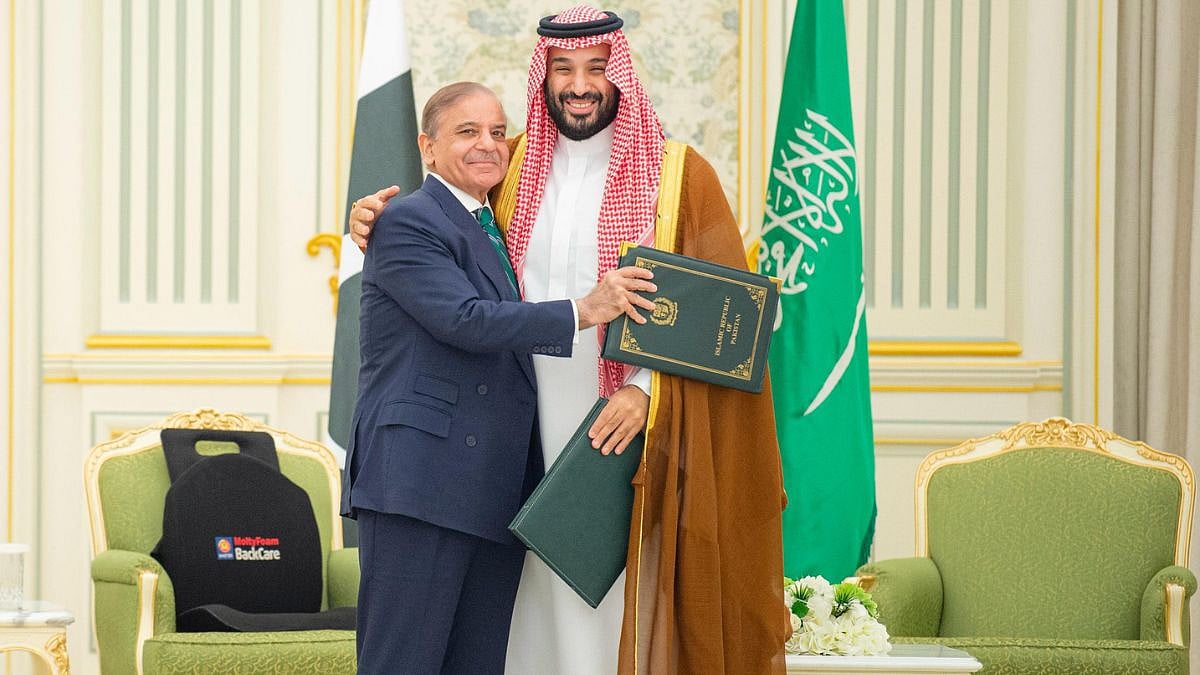In 1971, East Pakistan seceded from Pakistan to become Bangladesh. That is, of course, old history. So why discuss it now? Because it has once again assumed center stage, thanks to the Congress Party resurrecting the issue to show Prime Minister Narendra Modi a peg or two down. That operation Sindhoor launched on May 7 and paused at 5 PM on May 10 was a roaring success in terms of bringing Pakistan on to its knees and has rankled many, including Pakistan, China, Turkey, Azerbaijan and the Congress Party. Congress’ riposte has been to pitchfork Indira Gandhi’s arguable phenomenal achievement in helping East Pakistan secede with Indian military support. In its worldview, Modi’s taming of Pakistan pales before what Indira Gandhi did more than half a century ago.
The ostensible provocation for Indian interference in then East Pakistan was to help the cause of democracy whittled down by the Pakistani government by refusing to swear in Mujibur Rehman of the Awami League as the chief minister after its spectacular victory in the hustings. There is a counterview that this was the proverbial thin edge of the wedge to worm into the hearts of Bangladeshis and wean them away from West Pakistan.
The freedom India and Pakistan won from the British rule in 1947 resulted in what are called enclaves—parts of Pakistan jutting into India and vice versa on the west and parts of Bangladesh jutting into India and vice versa on the east. But taken as a whole, India being sandwiched between Pakistan and Bangladesh, thus separating the two parts of a nation by as much as 2020 km on average if we take the driving distance between Dhaka and Islamabad as a broad indicator, is the largest enclave ever in world history and geography. That Chennai is also separated from New Delhi by about the same distance is a syllogism or specious argument because along the route from New Delhi to Chennai, the Indian government’s writ runs, whereas along the route from Islamabad to Dhaka, the Pakistani government’s writ didn’t run in a long stretch between the Punjab border and East Bengal border. In the event, East Pakistan was destined to shake itself off from the clutches of the domineering West Pakistan sooner or later.
Mountbatten, the last Viceroy, was in a tearing hurry to hand over. So, he could give Sir Cyril Radcliffe, who drew the boundary lines for the partition of India and Pakistan, just five weeks to complete the onerous task. He arrived in India in July 1947 and had until August 15th, the date of independence, to finalise the boundaries. He submitted his final plan on August 9, 1947, which was then announced on August 17, 1947. It is common knowledge that faced with such a daunting task and pressed for time, Radcliffe’s work was, by and large, an armchair exercise buttressed by the lulling knowledge that Pakistan’s hero, Mohammed Ali Jinnah, had, in the run-up to the partition, expounded the two-nation theory, whose major premise was Pakistan was for Muslims and India for Hindus. That is how massive enclaves came to be created and, in fact, became inevitable in his subconscious desire to give effect to the two-nation theory. The longest and the largest enclave, of course, was India, jutting into West Pakistan and East Pakistan, both of which had a massive Muslim majority.
No wonder, Islamabad had but a feeble hold on the province of East Pakistan to counter, though it had a large military deployment there. The Awami League, led by Mujibur Rehman, had in the past made no secret of its secessionist proclivities. Small wonder the Pakistani army tried to crush the rebellion with an iron hand. The Indian intervention did help the Awami League cause, but secession and independence from Pakistan were bound to happen sooner or later, thanks to the quirk of geography that interposed India between East and West Pakistan. The cultural and ethnic differences also stoked the secessionist urges.
Reverting to the main issue, did the creation of Bangladesh help India? Indira Gandhi supported the independence of East Pakistan (later Bangladesh) for several reasons, all primarily focused on and stemming out of the refugee crisis and the humanitarian cost of supporting the people of East Pakistan. She argued that it was more economically sensible to engage in military intervention against Pakistan than to handle the influx of millions of refugees fleeing persecution and violence. But the refugee problem refuses to die down. It rages even today, thus putting a question mark, albeit in partial hindsight, on Indira Gandhi’s wisdom to interfere. More importantly, it gave the Pakistani ISI and its military establishment an additional sore point. Ever since the Bangladeshi secession, they have been raving maniacs unable to accept Kashmir as part of India and resenting Bangladesh as a nation-state that has left Pakistan far behind in economic progress and out of their sphere of influence.
Bangladesh and India share a complex relationship characterised by both cooperation and challenges in a manner of a love-hate relationship. While Bangladesh has historically benefitted from India's support during the Bangladesh liberation war and has a strong cultural and economic connection with India, recent years have seen a rise in anti-India sentiments in Bangladesh, partly due to concerns over border disputes, water sharing, and perceived political interference by India. The present dispensation, consisting of the interim government led by Muhammad Yunus, the founder of Grameen Bank, for which he was decorated with the Nobel Prize, is cosying up to China, much to the chagrin of India. China is the second permanent foe of India. It has had expansionist ambitions fuelled by the loss of Sikkim to India. So, China loses no opportunity to woo India’s neighbours, including Nepal, Bhutan and Bangladesh, to its side. For good measure, it has the financial muscle, a 5 times larger economy vis-à-vis India, to elbow out India in the race for dominance of the common neighbours.

More than four decades have passed since the secession of East Pakistan into Bangladesh. While that has been something to cherish for the Bangladeshis, who have successfully emerged out of Pakistani dominance and have their own achievements to show, as far as India is concerned, it has not been an unalloyed success story, insofar as pandering to the secessionist instincts, including with military might, goes. One wonders if things would have been different had Indira Gandhi annexed East Bengal (now Bangladesh) and merged it with West Bengal in the manner of annexing Sikkim. That would have expanded our boundaries and given access to natural resources, including water. Instead, Indira Gandhi remained content with the role of the kingmaker, leaving Bangladesh an independent country. Of course, by interfering she succeeded in splitting India’s envious neighbour Pakistan, but little did she anticipate that Bangladesh would sooner than later try to break free of India’s influence, if not dominance.
S Murlidharan is a freelance columnist and writes on economics, business, legal and taxation issues.










